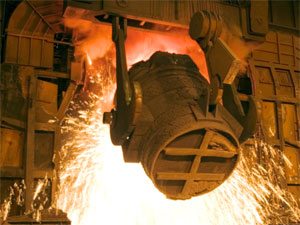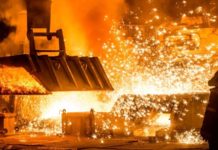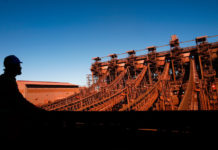
[miningmx.com] – GOVERNMENT’S intention to intervene in the steel industry by setting lower prices, limiting exports of iron ore, and set national production targets has made industry players jittery.
Others, like Investec mining analyst Albert Minassian, is of the view that it’s hard to understand. “South Africa has for many decades produced more steel than it needs with the result that the excess steel is exported, usually at a loss,’ he says. “What’s the point of keeping more iron here? The steel industry has been adequately profitable for five out of thirty years.’
Trade and Industry Minister Rob Davies on Thursday announced the fifth version of South Africa’s Industrial Policy Action Plan (IPAP) in which he set out wide-ranging interventions to secure steel at “developmental prices’ and make it available to the downstream manufacturing industry.
“Obviously the whole idea is to supply steel cheaply so that manufacturers can make stuff and export it so that the country benefits,’ Minassian says. “But there isn’t enough play between high cost and low cost steel to make any country significantly more competitive.’ Government’s planned interventions are the wrong path to take.
The department of trade and industry (DTI) has long had gripes with the monopolistic, import-parity pricing policy that ArcelorMittal SA (Amsa) practices, which according to Davies, has repressed downstream beneficiation in the steel industry.
Says acting deputy director-general Garth Strachan: “We’ll have to start attracting foreign investors who are saying to us, “You can no longer provide cheap electricity; your labour is not cheap. What is your competitive advantage? Why should we invest in you?’ ‘
The DTI’s beneficiation strategy, Strachan believes, will be one of the magnets for investment. “That’s why all the regulatory instruments are being put in place to ensure competitive advantage becomes a global competitive advantage.’
But according to Minassian, there isn’t much government can do to make South Africa’s steel industry competitive – especially not by controlling steel prices and output. “I’m afraid there’s no solution to the problem. South Africa has to accept the fact that it’s too small to matter. This problem is not solvable.’
The agreement between Kumba Iron Ore (KIO) and Amsa which has allowed Amsa to buy iron ore from Kumba’s Sishen mine at highly preferential price levels has also done little to create a flourishing domestic steel market, Minassian says. “The problem is there’s a mismatch of capacity. We have more capacity to make steel than we need.’
The other dilemma is a manufacturer needs to produce as much as possible to bring the unit cost down, but then it is saddled with a surplus that has to be sold at a lower price.
Another aspect of the IPAP is government’s intention to create more competition in the steel industry by establishing a new steel producer with the aid of an international partner.
“I cannot see how this could succeed,’ says Minassian. “As it is, the industry cannot make a good return on their existing operations. How is government going to attract investment into a business that is making a loss? Unless it provides sufficient economic incentives – and I don’t think “cost plus’ iron ore will be sufficient.’
Meanwhile, a date has yet to be set for the arbitration between Amsa and Kumba over the pricing agreement dispute. Currently, the sale of iron ore from the Sishen Mine to Amsa is regulated in terms of an interim arrangement between them that was reached in December 2012.
Minassian is of the view that the two parties should rather attempt to resolve the matter through negotiations as opposed to arbitration.
“Even if Kumba wins the dispute the problem won’t go away. How enforceable is it anyway? At the end of the day, if Kumba charge Mittal too much it will have to shut down capacity and government will be very upset,’ he says.
“The arbitration can only really benefit Mittal. If they win the dispute, the cost (of producing) plus the 3% mark-up remains.’










